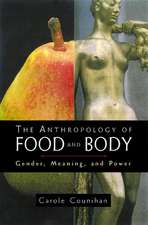Living with Things: Anthropology Matters
Autor Nicky Gregsonen Limba Engleză Paperback – 29 sep 2011
| Toate formatele și edițiile | Preț | Express |
|---|---|---|
| Paperback (1) | 218.91 lei 6-8 săpt. | |
| Sean Kingston Publishing – 29 sep 2011 | 218.91 lei 6-8 săpt. | |
| Hardback (1) | 457.36 lei 6-8 săpt. | |
| Sean Kingston Publishing – 14 feb 2007 | 457.36 lei 6-8 săpt. |
Preț: 218.91 lei
Nou
Puncte Express: 328
Preț estimativ în valută:
41.89€ • 43.58$ • 34.59£
41.89€ • 43.58$ • 34.59£
Carte tipărită la comandă
Livrare economică 15-29 aprilie
Preluare comenzi: 021 569.72.76
Specificații
ISBN-13: 9781907774072
ISBN-10: 1907774076
Pagini: 202
Dimensiuni: 156 x 234 x 11 mm
Greutate: 0.29 kg
Editura: Sean Kingston Publishing
Seria Anthropology Matters
ISBN-10: 1907774076
Pagini: 202
Dimensiuni: 156 x 234 x 11 mm
Greutate: 0.29 kg
Editura: Sean Kingston Publishing
Seria Anthropology Matters
Descriere
Based primarily on a former coal-mining village in Northeast England, this book explores practices of inhabitation, from moving in or being modernized to the daily accommodation of sleep and children. It provides a demonstration of what happens to consumption research when it comes home and is positioned not in sites of exchange but within the home and in households.
















